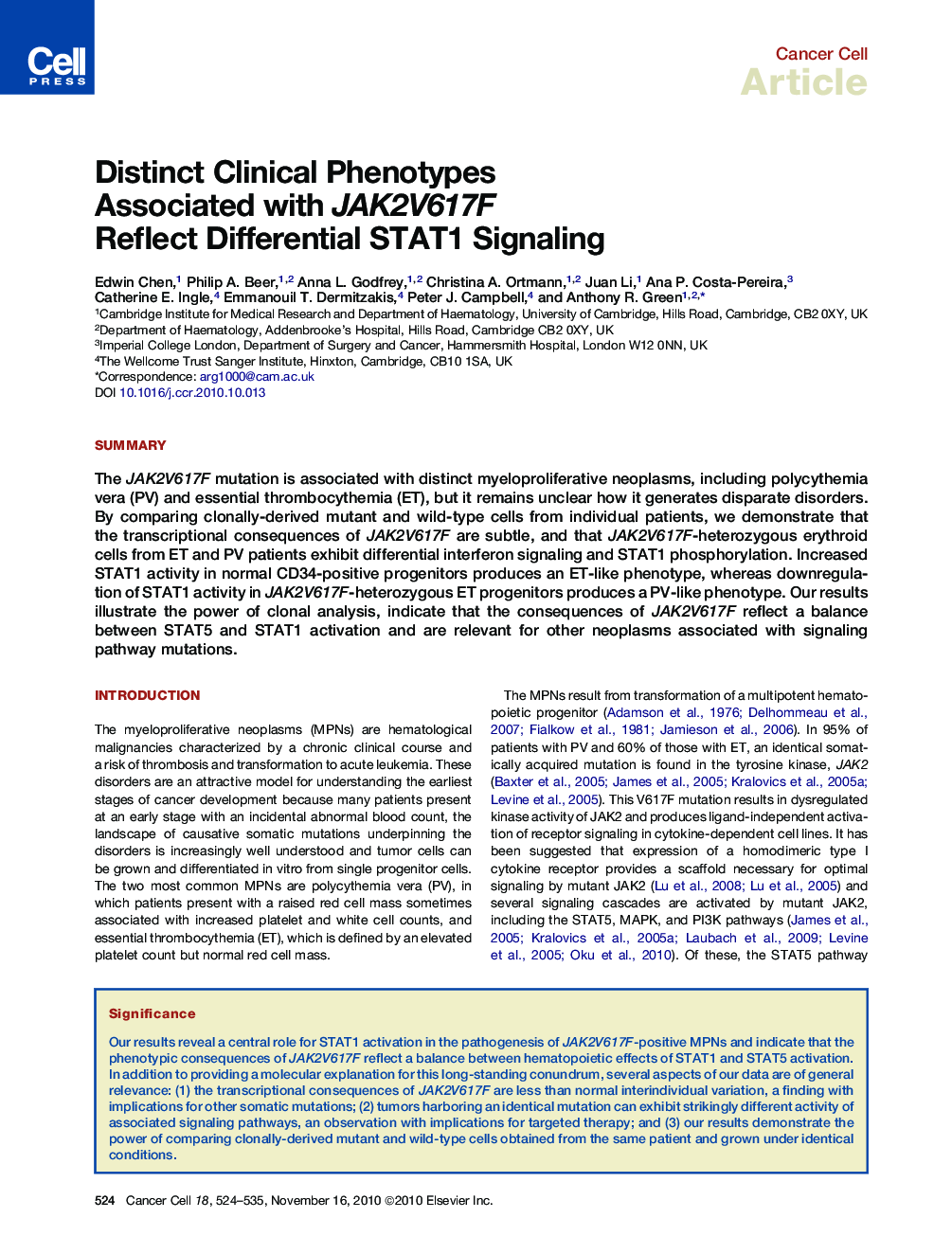| Article ID | Journal | Published Year | Pages | File Type |
|---|---|---|---|---|
| 2107670 | Cancer Cell | 2010 | 12 Pages |
SummaryThe JAK2V617F mutation is associated with distinct myeloproliferative neoplasms, including polycythemia vera (PV) and essential thrombocythemia (ET), but it remains unclear how it generates disparate disorders. By comparing clonally-derived mutant and wild-type cells from individual patients, we demonstrate that the transcriptional consequences of JAK2V617F are subtle, and that JAK2V617F-heterozygous erythroid cells from ET and PV patients exhibit differential interferon signaling and STAT1 phosphorylation. Increased STAT1 activity in normal CD34-positive progenitors produces an ET-like phenotype, whereas downregulation of STAT1 activity in JAK2V617F-heterozygous ET progenitors produces a PV-like phenotype. Our results illustrate the power of clonal analysis, indicate that the consequences of JAK2V617F reflect a balance between STAT5 and STAT1 activation and are relevant for other neoplasms associated with signaling pathway mutations.
► Effect of JAK2V617F on transcriptome is subtle and less than interindividual variation ► STAT1 is activated in JAK2V617F-heterozygous erythroblasts in ET and not PV ► STAT1 activity provides molecular mechanism for difference between ET and PV ► Power of comparing clonally-derived mutant and wild-type cells from same patient
